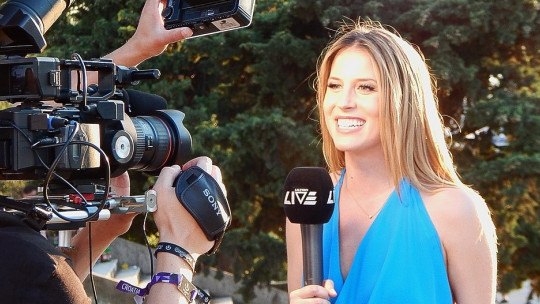Speaking in front of a camera can be a stressful and complex experience. In front of the lens, there are people who feel so much pressure that they seem to forget basic social skills to the point that they notice how nothing they do is spontaneous; It seems like they have to take “manual” control over each and every movement of their body, without being able to reach everything.
In this article we will see several tips on how to speak in front of a camera taking care of both aspects related to nerves and those that have to do with communicating better.
How to speak in front of a camera?
Our ability to adapt to the demands of the environment does not depend only on what we have mastered in the past, nor on what we know in a theoretical, intellectual way. An example of this is that, for example, someone who on most occasions appears very confident and extroverted can completely block themselves on stage or in front of a camera.
In other words, our ability to reach our goals effectively depends both on us and on the context in which we find ourselves. Something as simple as having a person observe us can completely transform the way we act. AND The same thing happens in the world of audiovisual media with recordings using a camera regardless of whether the content generated is for television, cinema or the Internet.
So, if you have never faced an experience based on speaking in front of a camera, it is very possible that you will have some problems. Fortunately, these are easy to polish with a little practice and some patience. Below you will see a series of guidelines on how to achieve it. Apply them throughout different sessions to obtain results.
1. Perform vocalization exercises
In front of a camera it is very important to vocalize since the people who are going to see you will not be able to ask you to repeat things and, on the other hand, Nerves may be contributing to why you don’t do it much whether due to muscle control problems or dry mouth.
To do this, stand in front of a mirror and train your vocalization, slightly exaggerating your mouth movements to get used to that greater mobility. After the first training sessions. Record yourself doing it, to get used to the new context.
2. Warm up the muscles
To speak in front of a camera you have to loosen up a little. To do this, do a warm-up based on relaxing all the muscles from the trunk up while you do small jumps and make random sounds without vocalizing or saying specific words.
3. Ensure good comfort conditions
When you speak in front of the camera, if possible, make sure that minimum conditions of comfort are met: that it is neither cold nor hot, that you are not blinded by any sunlight or artificial light, and that you have a bottle of water on hand, in case your mouth gets dry. This will have a positive impact on the way you communicate and make yourself understood since you will not feel in a vulnerable situation for completely avoidable reasons.
4. Remember the succession of ideas that you are going to communicate
It is not always necessary to literally memorize a script. In these cases, pay attention to memorizing only the basic ideas that will structure your speech. This way, you will be less likely to get stuck because of doubts about which word to use, since everything will be more spontaneous and fluid.
5. Make yourself a basic script
Prepare a small note on a sheet of paper stating the main points you want to discuss, so that with A simple glance of a few seconds can refresh your memory and move forward. This script should be more like an outline than a series of developed paragraphs.
6. Don’t get obsessed with the goal
Paying too much attention to looking at the lens is counterproductive, because it distracts you from other more basic tasks when speaking in front of a camera. Simply, Try not to let your gaze stray from the area in the center of which is the part you should look at.
7. Imagine your audience
The degree of uncertainty that can be experienced when speaking to an inanimate object usually makes us more likely to doubt what to do and how to continue with our speech. To avoid this, imagine the people who are watching you or who will see you. Out of common sense, you will do it in a realistic way, faithful to what is surely happening or will happen when the video is broadcast. This way you will have constant feedback that will make it easier for you to know what tone to use, what rhythm to print in your words, etc.
8. Take prosody classes
This is a special recommendation for those people who will speak in front of a camera constantly. Whether to make YouTube videos or any other multi-day project weeks or months, it is good to familiarize yourself with this type of activity and adopt a speaking style that is your own and in which you can move easily.









